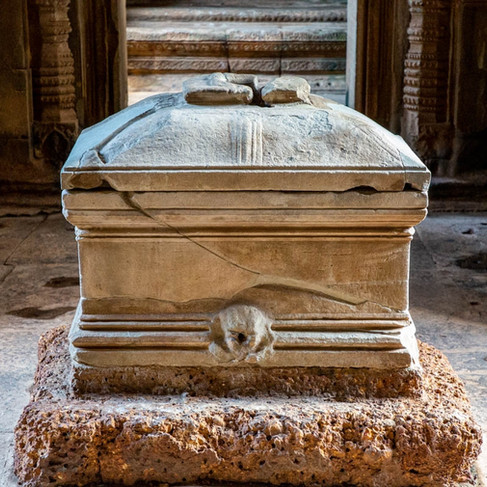The Forgotten Temple of Banteay Samré
- Shannon
- May 13
- 3 min read
Lacking any inscriptions describing its foundation, the mysterious history of Banteay Samre is left to speculation. According to local lore, construction may have initially commenced around 967AD for the Samré people, an isolated ethnic group believed to have inhabited the area long before the rise of the Khmer Empire. Historians believe it was later completed in the early 12th century by King Suryavarman II or his successor, King Yasovarman II.

Architecturally, Banteay Samré resembles a miniature Angkor Wat, with a central sanctuary flanked by galleries, surrounded by two concentric walls and a now-dry internal moat. Built primarily of laterite and sandstone, the temple’s walls are still adorned with remarkably well-preserved carvings that depict Hindu myths, celestial dancers and divine beings. What sets Banteay Samré apart isn’t just its layout but its astonishing level of preservation.
Stone wall carvings have been identified as episodes from the Vessantara Jataka. This illustrates the story of Prince Vessantara, a previous incarnation of the Buddha, who is known for his extreme generosity. He gives away everything he owns, including his family and a magical elephant, to those in need, exemplifying the virtue of generosity (dāna). His actions demonstrate the perfection of generosity, a crucial step towards enlightenment. The presence of Buddhist scenes in a Hindu temple indicates that the original history of the place may have been mutilated.

The central tower and main shrine contains an ancient stone sarcophagus, which is unusual in the context of ancient Khmer culture. Hewn from a single block of stone, it may have been used for the ritualistic purification of mortal remains before burial or cremation. It might also be a stone reliquary, a container used to enshrine and protect sacred relics such as bones, hair or objects of religious significance.
Banteay Samré may not boast the towering grandeur of Angkor Wat or the enigmatic faces of Bayon, but it holds its own kind of magic; quiet, refined and atmospheric. It's remarkably preserved carvings, unique blend of Hindu and Buddhist iconography and the presence of an empty stone sarcophagus all speak to a temple that was deeply sacred, yet shrouded in mystery. This beautiful relic is a window into a transitional moment in Khmer history, when artistic mastery, spiritual devotion and evolving beliefs quietly converged.
Location : 17000 Sok San Road, Krong Siem Reap Province, Kingdom of Cambodia
How to get there : This remote temple complex is located about 20 km's east of Angkor Wat, near the Rolous group of temples and is located slightly outside the main Angkor Archaeological Park. You'll need to organise a private car or tuk-tuk to take you here, a day trip usually costs around $50USD. The Phnom Kulen national park & waterfalls, Banteay Srei, the Cambodia Landmine Museum and the Butterfly Centre are located nearby, to make the drive out worthwhile.
Attraction Info : Admission is included with the Angkor temple pass. Entrance fees are structured to accommodate various itineraries. A 1-day pass is $37USD, a 3-day pass is $62USD and a 7-day pass at $72USD. Tickets can be purchased at the official Angkor Ticket Office or online. Generally 3 days is sufficient time to explore the area. The grounds are open between 7:30am - 5:30pm. You cannot buy a separate ticket to visit his temple of its own.
បន្ទាយសំរែ
Official Website : https://www.angkorenterprise.gov.kh/
Thanks for reading about The Forgotten Temple of Banteay Samré. Check out more destinations here!



























